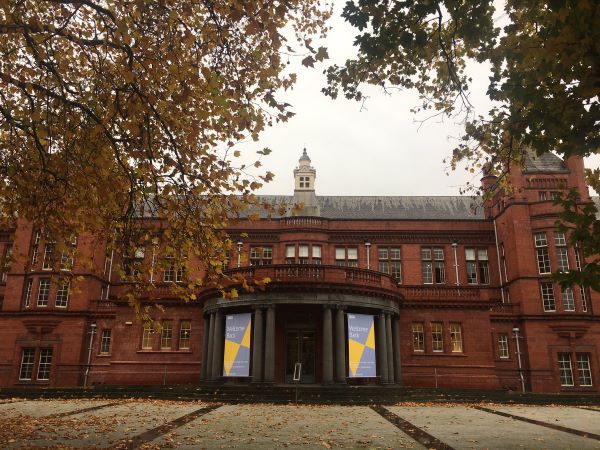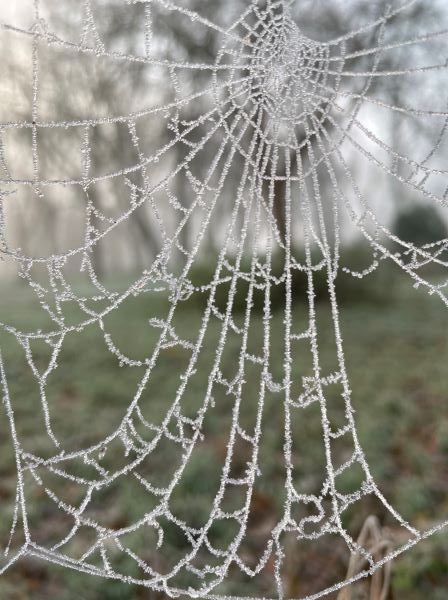Bria talks about how the heritage sector is responding to the climate crisis and the importance of Carbon Literacy at the Whitworth as we try to build a greener gallery and reduce carbon emissions in our workplace.

On November 13th, 2023, the Visitor Team participated in a full day of Carbon Literacy training, taking the first step in the Whitworth becoming a Carbon Literate organisation. This has been a year in the making since I joined the Whitworth in August 2022. As we come into 2024, and look to the year ahead, a key question in our minds is: what next?
Before we look to the future, let’s step back and set the stage. What is Carbon Literacy? And why did the Visitor Team undergo training to become Carbon Literate?
This journey started in July 2022, where I trained in Carbon Literacy with my other organisation, Museum Development North West. In partnership with Manchester Museum and Museum Development England, the Roots and Branches project has been delivering and training museums in becoming more sustainable and proactive in taking action against the climate crisis. Part of this programme is the roll-out of Carbon Literacy training, catered specifically for museums and galleries.
What makes this training impactful is that is made by heritage workers, for heritage workers. The ongoing climate crisis is one that threatens all our livelihoods – from increased flooding threatening buildings, to higher temperatures posing a threat to both staff and objects. From the Whitworth’s perspective, heavier rainfall means an increased threat of water leaking through and damaging our art works.

Carbon Literacy training, using the module structure from The Carbon Literacy Project, is a full day of learning and group discussions about the role of carbon emissions in the climate crisis. What makes this training impactful is that it encourages everyone to come together to dedicate time and care to this issue, as each of the four modules relies upon group participation to deliver home the lessons. When you take part in Carbon Literacy training, you learn about the basics of the climate crisis, and why reducing carbon emissions is a core tenet of fighting the effects of the climate crisis.
At the end of the day, everyone participating in the training develops an individual action for them to take in the workplace, and a group action that involves their sphere of influence, such as their colleagues or community partners. With a fully trained Visitor Team, that means we have over 25 actions dedicated to reducing carbon emissions in the workplace!
Whilst Modules 1 and 4 serve as the introduction and conclusion to the training, Modules 2 and 3 is the meat of the training, where we went in-depth on climate justice and climate policy. Of the four modules, the Visitor Team responded most positively to the module on climate justice. The group discussions were invigorating, as everyone brought their own experiences and feelings to this issue in a manner that was both intelligent and emotional. For example, one of the key findings of carbon justice relates to the issue of countries such as the US having some of the highest carbon emissions, whilst experiencing little of the disastrous effect of climate change in the guise of extreme weather events. The phrase “climate injustice” reflects a severe imbalance of power in how the international community tackles the climate crisis.
Furthermore, the climate crisis enhances social inequalities already embedded in our societies – racism, sexism, classism etc. When this is discussion is being had by members of an art gallery that wants to use art for positive social change, how do we incorporate that into our working lives? What discussions are we having with ourselves, our visitors, our community? This module was a useful springboard in getting everyone to think about what actions they can take in reducing carbon emissions in the workplace, both on an individual and group level.

Why start with Visitor Team? From a personal perspective, as a Visitor Team Assistant, this was the most logical place to start – I am privileged to work with a team as intelligent, caring, and trusting as the Visitor Team at the Whitworth. The themes of Carbon Literacy would resonate with the values we hold, and we are always pushing ourselves to make the gallery more of a learning space conducive to all audiences. But on the more logistical side of things, the Visitor Team is integral to the successful delivery of exhibitions and programming, as we are face-to-face engaging with visitors and communities daily.
The exercise that played the most to our strengths was the opening exercise, where everyone was encouraged to bring in an object that speaks to them about the climate crisis. Being a team that thrives on talking to others about interesting stuff, this was a cinch! It was a joy to seem my colleagues in their element, talking about a big issue with an approach that was personal, intelligent, and at times, comedic. It would be difficult to choose just one object, but I think I can speak for everyone when I say that the stand-out object was Ruby’s object: dentures with the trunk of a plum tree grown around it.
Combining our existing skills in visitor engagement with a renewed knowledge of carbon emissions and the climate change, the Visitor Team is primed to integrate Carbon Literacy into our working practice. For some, this may look like highlighting environmental themes in our galleries, for others it means training to become a Carbon Literacy Trainer so that more of us can deliver training to our colleagues.
What next? Get more staff members trained up – the more people involved, the more connections, resources, ideas are shared across the gallery. Since reopening in February 2015, we have been working towards becoming a greener, more sustainable art gallery, and this is the next big step of that process. We hope you’ll join us on our journey to a green future at the Whitworth.
